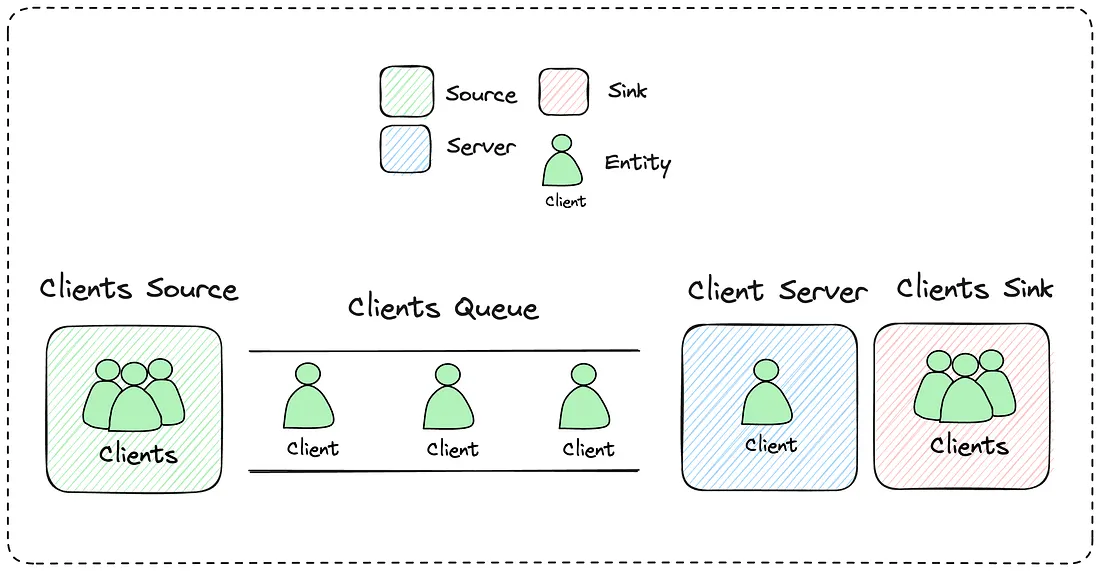Discrete Event Simulation¶
🧠 Overview¶
Discrete Event Simulation (DES) is a modeling technique enabling the emulation of real-world systems by simulating individual events as they occur over time.
It finds many applications in diverse domains like supply chain management, healthcare systems, transportation, and finance among others.
Fundamental concepts¶
DES resolves around the notions of entities, events and simulation clocks, but also queues to manage and process entities, where:
- Entities represent elements within the system under observation.
- Events triggered by entities, affect the system's state or conditions.
- The simulation clock describes discrete instances where events occur, describing time progression within the simulated environment.
- Queues are used to manage and process entities, reprensenting waiting lines where entities await processing.
DES components can be classified into: - sources: They are responsible for the production of entities and their insertion into the simulating system - servers: They are in charge of delaying entities in the system for a given time period, possibly with queues - sinks: They are used to remove entities from the simulating system and collect information about times spend by entities and performance of the overall system (according to problem specific metrics)

🛠️ Related Technologies¶
✨ What I Learned¶
Usage : what can be used with DES?¶
- DES alone can provide good Key Performance Indicators (KPI) but don't "search" for a better solution
- Pairing it with Metaheuristic is a powerful approach to solve real-world problems:
- We can generate candidate solutions with metaheuristics and evaluate them with DES in an iterative manner to find better solutions.
- DES capture complexity from real systems
- Metaheuristics explore smartly possible solutions and navigate trade-offs between conflicting KPIs like lower costs VS higher throughput
Advantages of DES¶
- System performance Evaluation: allows sophisticated analysis aiding in predicting system performance under varying workloads
- Predictive Modeling: can serve as a predictive modeling tool - it can simulate equipment failure scenarios, enabling proactive maintenance scheduling for instance
- Cost-effective Experimentations: DES can be used to simulate different strategies without real-world implementation, reducing risks and costs associated with trial and error.
Challenges and Limitations¶
- Complex model construction: modeling complex systems with numerous entities and events can be difficult
- Computational Cost: Large scale systems simulation might require huge computational resources. This makes extensive scenarios difficult to simulate without the proper infrastructure.
- It's by definition a discrete approach: While suitable for modeling systems with discrete events, it's not appropriate for systems where events occur continuously.
🔗 Related Resources¶
- Introduction to Discrete Event Simulation with Python by Vito Stamatti - 2024